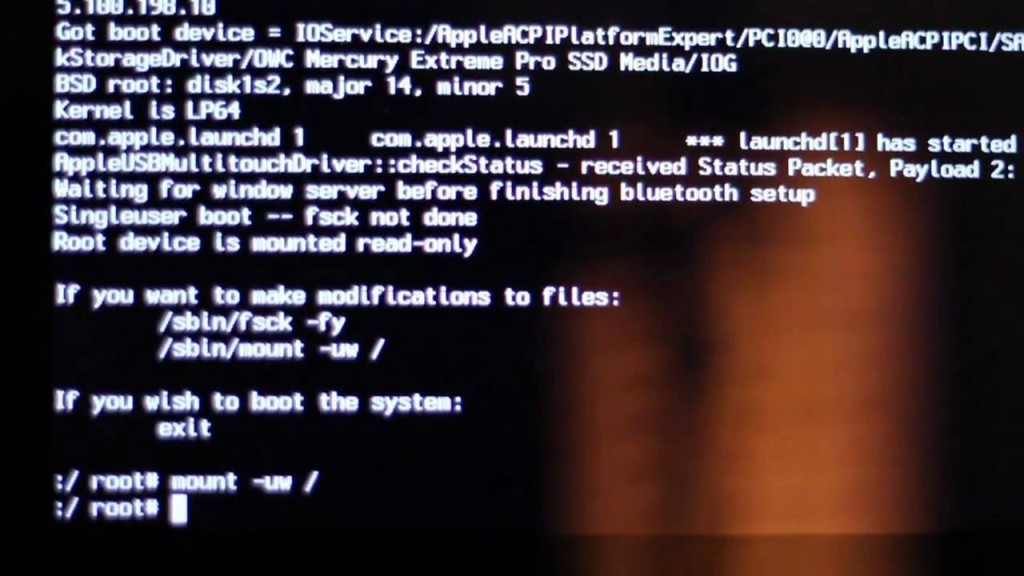Here are some solutions for accessing the files on your Macintosh Hard Drive when your drive will not boot to the desktop.
A Mac can be started via a USB port, with a USB key or external hard drive, but that device needs to have Mac OSX system installed on it to boot, as well as other requirements. Best bet is to always backup your Mac hard drive with a bootable image created by Apple Disk Utility or a third party utility such as Carbon Copy Cloner. The easiest way to keep your files backed-up is by using Time Machine, which is built in to the Apple OS. The only requirement for Time Machine is to have an attached hard drive to back your files up to.
If you don't have a bootable backup, or a way to get a Mac drive, you will need to boot the computer from another operating system.
First, try to boot your Mac in Recovery mode, holding down Cmd-r on restart. If that doesn't work, try for Internet Recovery, which is restart and hold down Cmd-Opt-R.
Apple sells Apple Remote Desktop on the Mac App Store for $80, but you don't have to spend any money to remotely connect to your Mac. There are free solutions — including one built into your Mac. These solutions will let you access your Mac's desktop remotely, whether you're using another computer on the same local network, or you're. These are some of the major and popular Best Free App for MacBook Pro, iMac and Mac Mini which you must try on your Mac machine for improving the overall productivity.
Apple OSX Internet Recovery Article: https://support.apple.com/en-gb/HT201314
Secondly, you can try to boot your Mac into Safe mode to see if you can boot to a minimal desktop.
Start or restart your Mac. Immediately after you hear the startup sound, press and hold the Shift key.
Remote Access Imac From Macbook
Release the Shift key when you see the Apple logo appear on the screen.
After the Apple logo appears, it might take longer than usual to reach the login screen or your desktop. This is because your Mac performs a directory check of your startup disk as part of safe mode.
To leave safe mode, restart your computer without pressing any keys during startup.
Apple Article on booting your Mac into Safe Mode: https://support.apple.com/en-us/HT201262
If neither of those work, find another Mac, connect it to your Mac with Firewire or Thunderbolt cable. Then reboot the non-bootable Mac holding down the 't' key, which puts it in Target Disk Mode. If this works, the Mac hard drive will appear as a mounted drive on the other Mac.

Apple Article on installing OSX on an External Hard Drive so you can boot from it: https://support.apple.com/en-gb/HT202796
Apple Article for creating a bootable installer for OSX Yosemite (10.10) & OSX El Capitan (10.11): https://support.apple.com/en-gb/HT201372
Apple Article: Booting Into Target Disk Mode For File Transfer: https://support.apple.com/kb/PH10725?locale=en_US
Once you have booted from an external drive, and you can mount the you hard drive that was not booting, you can search the drive for files to recover, beginning with the files that are in the /Users/Home/ Directory.
Accessing Hard Drives That Have Been Encrypted Using File Vault
If the hard drive you are trying to recover data from has been encrypted with File Vault, and you don't know the login password, you will need to use a Recovery Key to login into the drive so you can access the data.
Macbook Pro To Imac Display
You can access the Recovery Key from the Caper JAMF Software Server on campus. Log into the JSS: https://casper.uiowa.edu:8443.
Access Imac From Macbook
For the step by step process to retrieve a Recovery Key, see ITS Support article:http://its.uiowa.edu/support/article/104815

